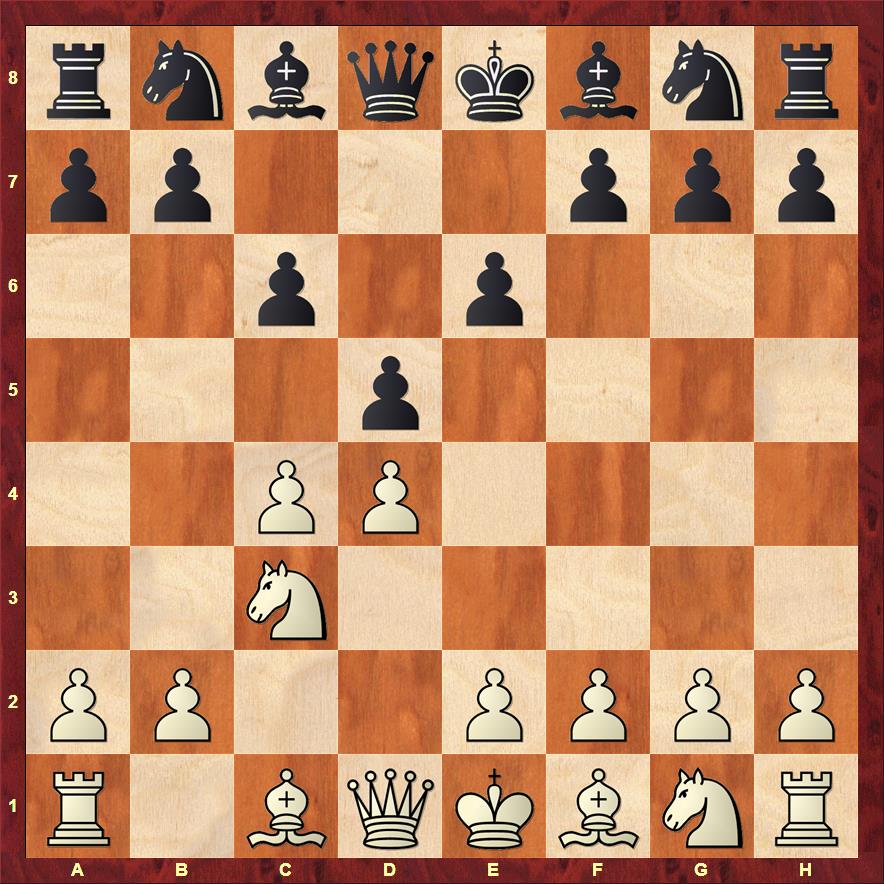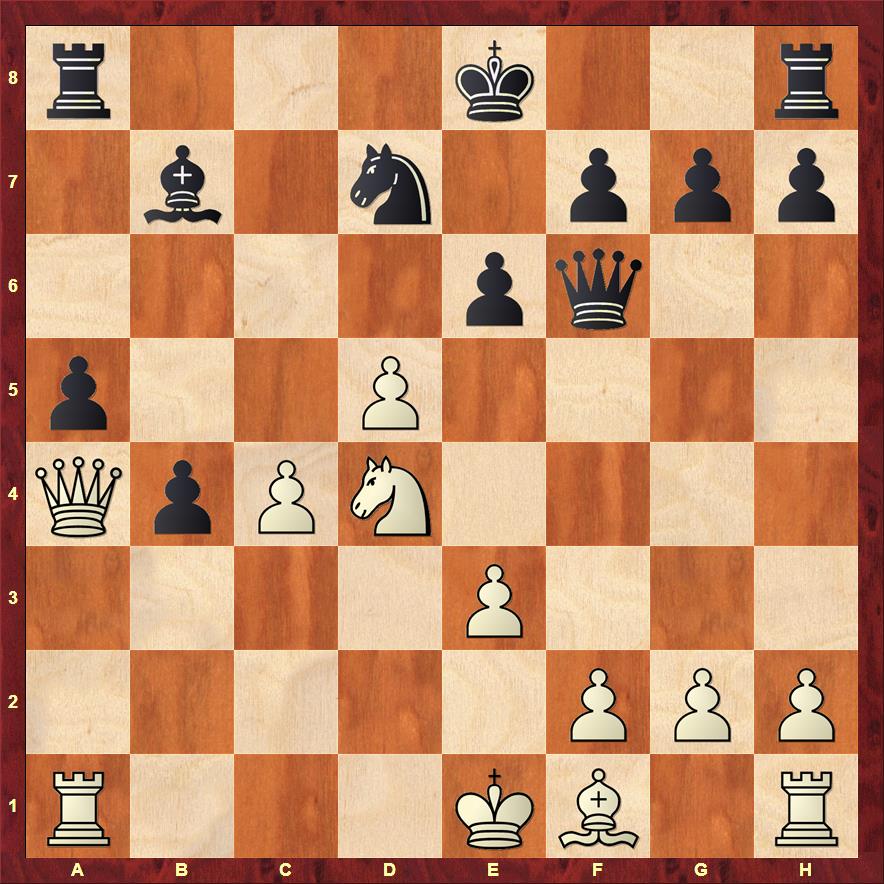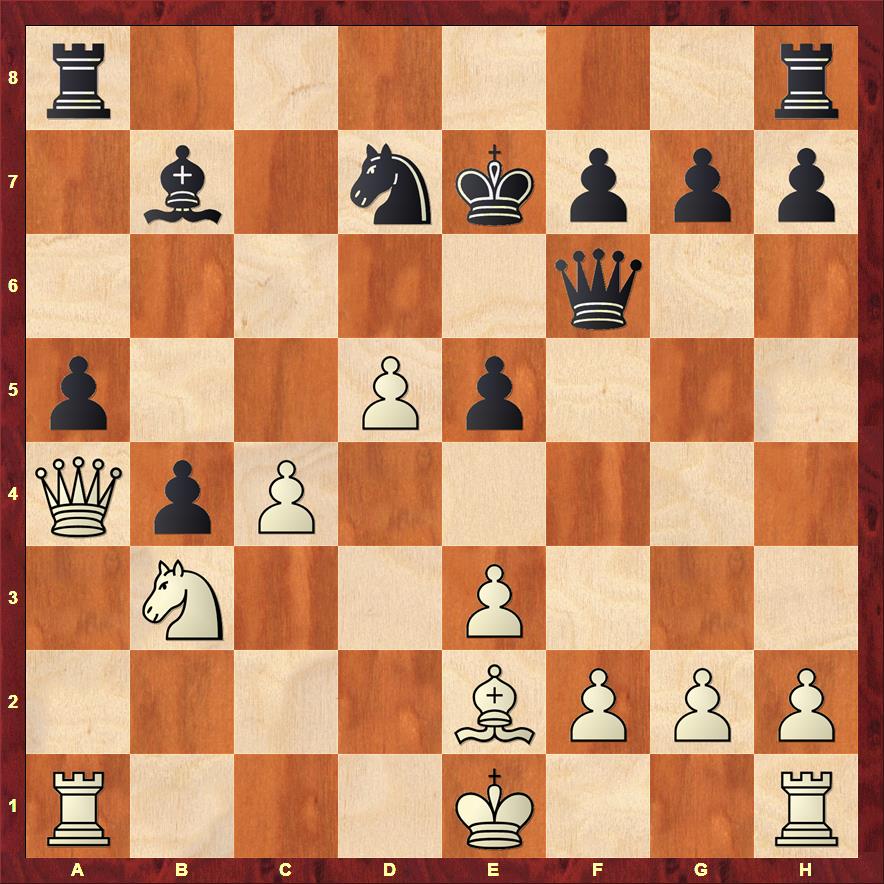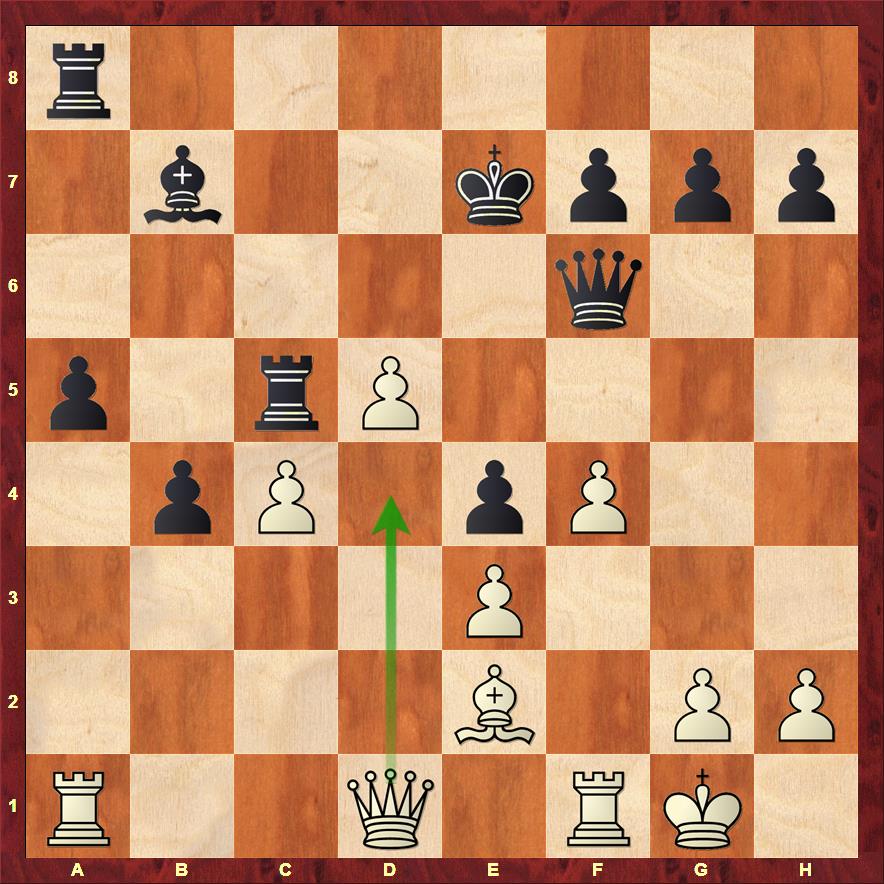


It was the last round of the Mineral FIDE Open Rating tournament in Vadodra, India. The tournament where I had started as the sixth seed (my rating was 2100), had gone extremely well and I had good chances of finishing second and winning the prize of Rs. 40,000 (approx. US $600). A lot was at stake on the last round and I was playing the talented ten-year-old D. Gukesh (2061). I had the white pieces and I decided to have a look at what my opponent plays and prepare against it. An initial check of Gukesh's repertoire revealed that the boy liked to play the triangle variation in the Slav.

The moves 1.d4 d5 2.c4 e6 3.Nc3 e6 denotes the triangle system. White has a few ways to play against this. 4.e4 leads to the sharp lines of the Marshall Gambit. 4.e3, is solid but after 4...f5 Black gets a decent version of the Stonewall because the bishop on c1 is shut behind e3. The other option I had was 4.Nf3 which leads to the Noteboom Variation after 4...dxc4.
It was already 11 p.m. and the last round was scheduled to begin at 9 a.m. in the morning. I really didn't want to indulge in deep preparation and get tired for the crucial game. The Opening Encyclopaedia 2016 had just been released a few days ago and I had bought it from the ChessBase India shop. It was time to put this product to use.
The important thing to know first when using the Opening Encyclopaedia is the ECO code of the opening that you are trying to search. Of course, I am not well versed with these codes but a simple trick solves the issue. I put the moves 1. d4 d5 2. c4 e6 3. Nc3 c6 on the board and pressed Ctrl+S. The following dialogue box comes up:

You do not need to save the game, you just have to make a note of the ECO code.
In this case it is D31. Click on cancel and you are back to the board.

The Opening Encyclopaedia has nearly 1000 opening surveys based on ECO codes from A00 to E99
I scrolled down to D31 and found the following surveys to my interest.

I had an option of nine surveys on D31 written by experts like Postny, Krasenkow, Kuzmin, Rogozenco, Ftacnik etc.
After spending a few minutes looking through the various options, I decided to follow the recommendations of Dorian Rogozenco. I would like to reproduce the introduction of the survey to just show you how nicely the material was presented and how easy it was for me to assimilate the knowledge.
Semi-Slav D31: The variation being examined begins with the moves 1.d4 d5 2.c4 c6 3.Nf3 e6 4.Nc3 dxc4 5.e3 b5 6.a4 Bb4 7.Bd2 a5 8.axb5 Bxc3 9.Bxc3 cxb5 10.b3 Bb7 11.d5 (repertoire for White)

By advancing the d-pawn White starts very sharp play, which requires from both sides good tactical skills. Given the multitude of possibilities, the diagram position is rather little explored in practice and therefore poorly investigated by theory. My goal is to show the potential of White's position and provide White players with promising ideas and concrete variations.
11...Nf6 12.bxc4 b4 13.Bxf6 The time factor is essential. By exchanging his bishop White drives away his opponent's queen from protecting the king. The entire concept of this opening line is connected with creating an attack against the black king. 13...Qxf6 14.Qa4+ Nd7 Starting with 14...Ke7 makes no difference, since after 15.Nd4 e5 16.Nb3 Black will have to develop the knight on d7 anyway. 15.Nd4

In this position the established way for Black to bring his king's rook into play is connected with the plan ...Ke7, followed by ...Rhd8 or ...Rhc8.
15...e5. Before playing ...Ke8-e7 Black chases away his opponent's powerful knight. The immediate 15...Ke7 allows the powerful pawn sacrifice 16.d6+! Kxd6 17.Rd1:

White has a dangerous attack and keeps the upper hand in all variations, see Shulman,Y - Petrov,J 1-0, Jobava,B - Gelashvili,T 0-1. (These games have links and directly open once you click on them in your ChessBase software when you use Opening Encyclopaedia 2016)
16.Nb3 Ke7 17.Be2

In this strategically complex and very interesting position the most important factor is the initiative. Both sides have two connected passed pawns, and keeping the opponent's pawns blockaded is a priority in such a situation. Black's plan is to exchange the knights on c5, which would establish a good blockade on the dark squares. White must try to create opportunities to use the somewhat exposed position of the black king. He should combine multiple ideas, such as f2-f4, Nb3xa5, Be2-g4 as well as the advances of his passed pawns.
Black must take control over the square c5 and choose between A. 17...Rhc8 and B. 17...Qd6. Other moves are considerably weaker. For instance 17...Qb6 which has the same purpose is just bad, since in contrast to 17...Qd6 from b6 the queen has considerably less influence in the centre. After 17...Qb6 White achieves a big advantage with 18.Bg4, pointing out the fact that the square b6 is no longer available for the knight.
A. 17...Rhc8 18.0-0 Nc5
The logical follow-up to the previous move. 18...Qd6 is dubious here, since besides the standard 19.f4, it allows 19.Nxa5! and after 19...Rc5 White has 20.Nxb7, attacking the queen. For 18...Qb6 see Blatny,P - Reefat,B 0-1.
19.Nxc5 Rxc5 20.f4

White would like to open up the centre and create threats against the opponent's king. Ideal for Black would be to hide the king on g8 and keep the blockade on e5, but the immediate 20...Kf8 runs into 21.fxe5 Qxe5 22.Qd7, winning. 20...exf4 21.Rxf4 only helps the first player. 20...Qd6 leads to Variation B.
20...e4
Trying to keep the centre closed is the natural answer. White cannot attack the pawn with 21.Qc2 because now the c-pawn is pinned and Black has 21...Bxd5. In practice White usually plays 21.Rad1, to which Black should reply 21...Kf8! 22.Rd4 Re8 with a complicated position, which requires some high level games for a precise evaluation. 21.Qd1!

This move has been played only once in practice. White prepares Qd1-d4, breaking the opponent's blockade of the c-pawn.
21...Kd6. Another natural reaction from Black. Anticipating the endgame, the second player centralises the king. Now the game Naumann,A - Galkin,A ½-½ continued 22.Qd4 Qxd4 23.exd4 Rc7 with a double-edged endgame, where the players agreed to a draw very soon. However, White has a more ambitious solution. 22.Qb1!

With the triangular manoeuvre of the queen White achieved perfect coordination of his pieces. It turns out that Black has problems protecting the e4-pawn, since a move like ...Ra8-e8 always runs into Ra1xa5 followed by Qb1xb4. Without the shield of queenside pawns the king on d6 is helpless against White's attack. Most probably Black must sacrifice e4 and try to either exchange queens, or advance the queenside pawns. The analysis shows that White has better prospects, see annotations to the above-mentioned game Naumann,A - Galkin,A ½-½.
B. 17...Qd6
A move introduced in practice by Krasenkow in 1993. It is designed to meet 18.0-0 with 18...Nc5 19.Nxc5 Qxc5, when besides blockading the c4-pawn, from c5 the queen also exerts pressure on the diagonal a7-g1 slowing down the advance f2-f4. In that case Black intends to choose later the optimal square for his king's rook (apart from c8, the rook can be placed on d8 or b8). Still the arising position is highly interesting and White should continue 20.f4! anyway (never met in practice), but that is a different subject and needs a separate investigation.
18.f4. The most energetic answer, preventing the opponent's intention to play 18...Nc5. 18...Rhc8 Again Black prepares the move ...Nd7-c5. The alternatives are weaker, see Babula,V - Blecken,V 1-0. 19.0-0 Nc5 For alternatives: Wang Lei - Stepovaia Dianchenko,T 1-0. 20.Nxc5 Rxc5

White would now be happy to play 21.Qc2, attacking the h7-pawn and at the same time creating the strong threat Qc2-e4. Unfortunately, after 21.Qc2 the pawn on c4 is pinned and Black has 21...Qxd5, with a large advantage.
In the game Shulman,Y - San Segundo Carrillo,P 1-0 White played 21.Rad1, after which Black rightly closed the centre with 21...e4. Then White entered an endgame with 22.Qa1 Kf8 23.Qe5 Qxe5 24.fxe5 and won after 24...Kg8 25.Rf4. However, it is worth noticing that when the black queenside pawns are not blockaded, such endgames are very dangerous for the first player. After the exchange of queens Black must start to advance his pawns at once with 24...a4 (instead of 24...Kg8) and it is White who is in troubles, see Miton,K - Krasenkow,M 0-1.
The main drawback of 21.Rad1 is that White decides too early the position of his queen's rook. It might well be needed on f1, or even on a1 in order to fight against the opponent's connected passed pawns. In the diagram position, the ideal for White is to combine several ideas, such as finding targets for attack in Black's position, opening files in the centre and eventually switching the queen to the kingside for a direct attack against the black king. At the same time it is vital for White to keep the black queenside pawns blockaded for as long as possible. The most promising move for White in the diagram position is 21.Rf3! with the intention to gain time for doubling rooks on the f-file. We'll see that there are other ideas behind 21.Rf3.
21...e4 The natural reaction. 21...Kf8 loses at once in view of 22.fxe5 Qxe5 23.Qd7. The only alternative seems to be 21...exf4. Then after 22.Rxf4 followed by 23.Raf1 White has a strong initiative. 22.Rh3 Finding another target for attack. This is another idea of the previous move - on the third rank the rook can use the g- and h-files. 22...h6 Now it might appear that White's play has gone nowhere. But the rook continues its way: 23.Rh5!

It turns out that in such a pawn formation from h5 the rook has the most influence on the centre. Besides threatening 24.Re5, the rook also controls square f5, preventing the advance ...f7-f5. In fact after 23.Rh5 Black has serious problems to prevent the loss of his e4-pawn. Instead he should probably give it up and try somehow to prepare the advance of the queenside pawns. However, with the queens on board the vulnerable position of the black king will always play its role. The analysis show that White has very good prospects of emerging victorious from all complications. See Analysis 21.Rf3.
Conclusion: After both main moves 17...Rhc8 and 17...Qd6 there are many hidden resources for White. The variations above show that the first player has plenty of ideas and although for a final conclusion they still need to be tested in practice, it is clear that the positions arising in the variation under examination contain a lot of attacking potential for White.
Going through the above material took me half an hour, and I gained great amount of knowledge about the opening that I was going to play. The lines went deep but with a grandmaster explaining them in words it was easy to understand and remember.
Apart from the above material there were also nine games annotated by Rogozenco which I quickly looked through
Armed with this knowledge I went to sleep. The next day I arrived at the game with great confidence and was able to surprise my opponent in the opening:

Runners-up position and a cheque of Rs. 40,000 were my winnings from the event!
 |
About the Author Atul Dahale is one of the first Internationally FIDE rated players from small town of Parbhani, Maharashtra in India. He loves the game of chess and enjoys the fact that he can travel to different places, meet people and make new friends. He has a live rating of 2170 and is a successful coach currently based in Pune, Maharashtra. You can contact him at atuldahale64@gmail.com |
|